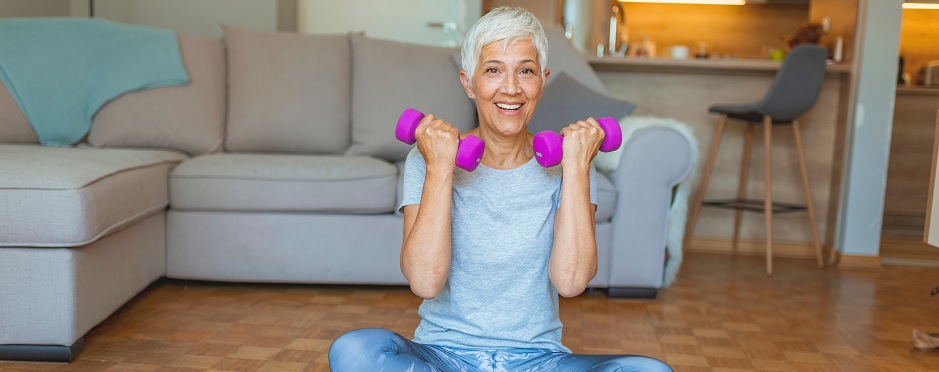
Why Your Next Prescription May Be for Exercise
Leave a CommentExercise can be performed at any age, and there is no exception as you grow older. In fact, older adults arguably need more exercise than their younger counterparts due to the advancing loss of muscle mass. Muscle mass decreases approximately 3–8% per decade after the age of 30, and declines even faster after the age of 60. With muscle mass loss, older adults are at increased risk of falls, injury and functional dependence. Exercise however, can improve and maintain muscle strength which can enhance overall quality of life. If you’re wondering how much exercise you should commit to, read on as we review recommendations made by the American Family Physician research team for exercise prescription for older adults 65+ years of age.
We first need to take into account where you are starting as health status and functional ability will dictate how much you can do safely. That said, any amount of exercise is better than none, even if health status prevents a person from achieving recommended goals. If able and upon checking in with your doctor, exercise training for optimal health includes the following: Aerobic training, strength training, flexibility training, and balance training.
Aerobic Training
Recommendation: At least 150 minutes of moderate-intensity aerobic activity or 75 minutes of vigorous-intensity aerobic activity.
What is moderate or vigorous intensity aerobic activity?
- Moderate intensity includes exercises where you start to breathe harder with a faster heartbeat. You should be able to talk but not sing. This equates to a 5-6/10 difficulty.
- Examples include: brisk walking, cycling, water aerobics, ballroom dancing, and gardening. If you are wheelchair bound, try performing seated marches, leg kicks, or arm movements in a repetitive manner.
- Vigorous intensity includes exercises where you won’t be able to say more than a few words without pausing for a breath.
- Examples include: jogging, running, fast cycling, fast paced dancing, heavy gardening.
Strength Training
Recommendation: At least 2 days/week of moderate intensity activity (non-consecutive days of the same muscle group) with 8 to 10 exercises involving the major muscle groups. Perform 8-12 repetitions of each exercise with 1-3 sets of each.
- Examples: use of resistance bands, weight machines, handheld weights, digging, lifting, heavy gardening, carrying groceries.
Flexibility Training
Recommendation: Stretching is best performed after aerobic exercise as the muscles will be warmed up and more responsive to stretching. Perform at least 2 days a week, but even greater gains are achieved with daily flexibility exercises. Hold stretches for 15-60 seconds for 1-4 reps. The goal is to attain at least 60 seconds in total for each muscle group.
- Examples: Stretching for calves, hamstrings, hip flexors, pectorals, triceps, and upper traps.
Balance Training
Recommendation: At least 2 hours per week, but further improvements are seen with more training. These exercises strive to obtain control while standing but with reducing base of support (e.g narrow stance, standing on one foot). To minimize the risk of falling during exercise, balance training should be closely supervised at first and begin with less challenging postures.
- Examples: Standing with feet together/one foot, walking backward, walking sideways, heel walking, toe walking, tai chi, etc. For more examples of balance training, click here.
Pain or injury preventing you from achieving any form of exercises? An Athletico clinic near you can help! Start by scheduling a free assessment and start physical therapy right away. Free assessments are available in-clinic and virtually through our Telehealth platform. Physical therapists are movement experts and can help you improve pain and function to get you on your way to reap the health benefits from exercise.
The Athletico blog is an educational resource written by Athletico employees. Athletico bloggers are licensed professionals who abide by the code of ethics outlined by their respective professional associations. The content published in blog posts represents the opinion of the individual author based on their expertise and experience. The content provided in this blog is for informational purposes only, does not constitute medical advice and should not be relied on for making personal health decisions.
References:
1. Volpi E, Nazemi R, Fujita S. Muscle tissue changes with aging. Curr Opin Clin Nutr Metab Care. 2004;7(4):405-410. doi:10.1097/01.mco.0000134362.76653.b2
2. Lee PG, Jackson EA, Richardson CR. Exercise Prescriptions in Older Adults. Am Fam Physician. 2017 Apr 1;95(7):425-432. PMID: 28409595
